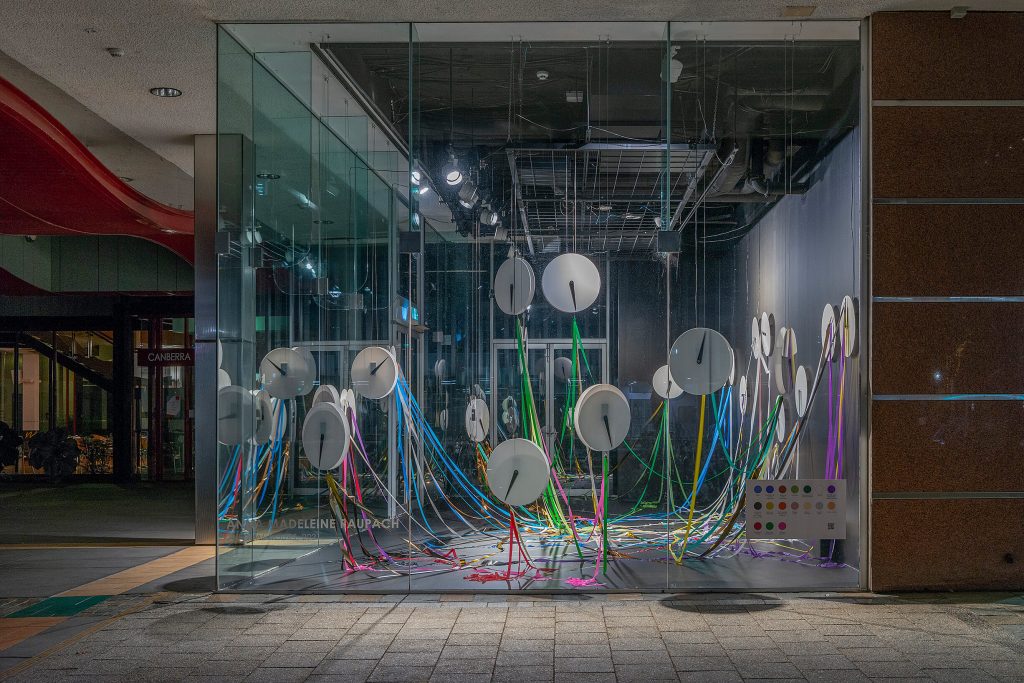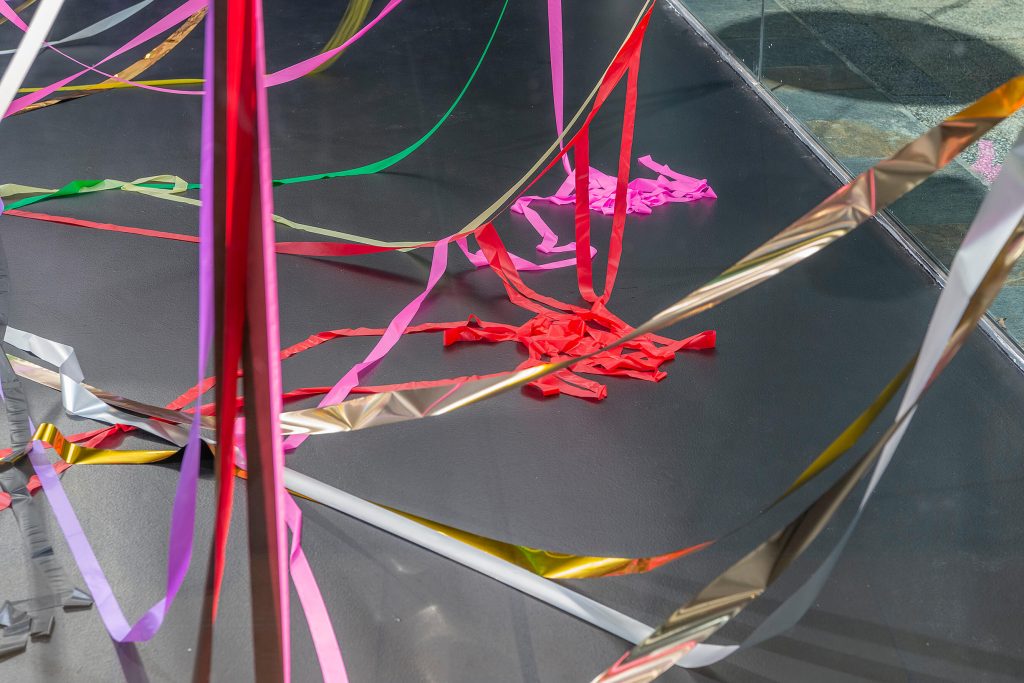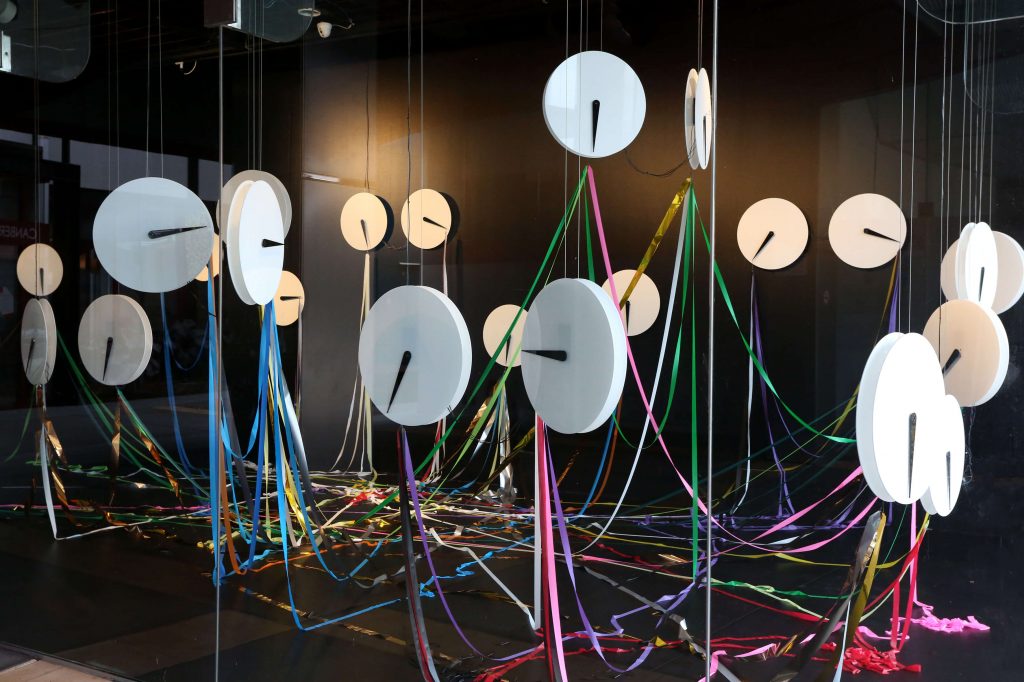Anna Madeleine Raupach is a Canberra based artist who has recently opened a new installation titled, ‘Unequal Hours’ which is on view on until 15 May at the Canberra Museum and Gallery, and can be observed by live stream here.
‘Unequal Hours’ comprises 25 clocks programmed to move at different speeds based on natural, technological and local cycles of time, the artist has secured colour-coded ribbons that connect one set of clock hands to another. The exhibition title is derived from the practice of measuring time before the standardisation of time.
We caught up with Raupach to learn more.

Is it optimal to be untethered from standardised time how do you include this principle in your day-to-day life?
It’s really hard to do this in everyday contemporary life with work schedules and constant communication. I have found the best way for me to be ‘untethered’ is when I can go outdoors in nature, hiking or camping, for days at a time and be completely out of phone range. I think being aware and noticing these different time scales is enough to help start generating a greater awareness and mindfulness of the world beyond human clock time.
Can you list some emotions you attach to experiencing time in this way?
Freeing, humbling, awe, intrigue, curiosity…
Your investigation centres on the subjectivity of time, how did you become interested in this?
Time has always been an instrumental part of my practice, from when I first started experimenting with hand-drawn animation.
In several of my installations I have incorporated interactivity that plays out through time, so the viewer has a different experience at different times, and the work evolves depending on the viewers, so it’s never the same. This creates a recursive relationship between the audience and the work which I find rewarding.
These more practical parts of my work led me to consider the conceptual side of temporal experience. A significant influence here was an Asialink Arts residency I did with Common Room in Banding, Indonesia. I felt there was a big cultural difference in how time was experienced, and that made me look more closely at how understanding and measuring time differently can influence the connections between art, science, cultural activity and everyday life.

It’s not just different ‘time zones’; some of the clock hands are spinning very fast and others anticlockwise. Can you unpack the measures of time or cycles of time have you employed here?
Each clock is related to a specific time scale that runs on its own cycle or speed different to ‘clock measurement’ of time, and there is a broad range of these timescales that I reference. These include natural timescales that are seasonal, such as whale migration or grape harvest and those more aligned with our day-to-day lives, like the moon orbit and tides, as well as much greater timescales such as Eucalyptus tree growth and astronomical events such as the solar cycle, eclipse cycles and Halley’s comet.
While these clocks are about nonhuman phenomena, there are others that are directly related to human life, for example population growth and decline, and measures of time we have created through technology, labour and society, such as upload and download speed, wage comparisons for the amount of time taken to earn a certain amount of money, and deforestation.
These references are very broad but for me it becomes most interesting when I start to explore the relationships between them.
For example, I have connected the clock that represents the menstrual cycle to the pair of clocks that compare wages, to represent the gender pay gap. The Bogong Moth clocks are connected to the clock representing the moon’s orbit and solar cycle, to reference the sensory cues related to light and magnetic fields that they use to navigate their migration.

Will the clocks operate and ribbons be tangled over the course of the show or are they reset and untangled at points? Is the final ‘tangle’ a metaphor for you or is your focus the generative process?
Because this is the first time I’ve installed this work at this scale and duration (4 months) it is all a bit of an experiment and I have embraced not having any rules for it!
For the first week I needed to do quite a lot of tweaking and untangling because I hadn’t had space to test all the clocks at once before, and the faster clocks were becoming stuck too quickly with the weight of so many other ribbons.
They are running more smoothly now and I am enjoying documenting the visual forms that the tangled lines are creating in the space. The tangling is a metaphor for how these intersecting timescales that the clocks represent rely on each other to all operate together, and if they become tangled some of those timescales may stop moving.
But the generative process is also interesting and necessary in this first iteration of the work. Hopefully once I know more about how the clocks operate at scale, I will be able to stage the installation again with less intervention. I am hoping this to show it again elsewhere, where I would re-program some of the clocks to run at timescales more relevant to that location, so there is an element of ‘local time’ for audiences to engage with.
Visit the artist’s website to engage with the project further unequalhours.com